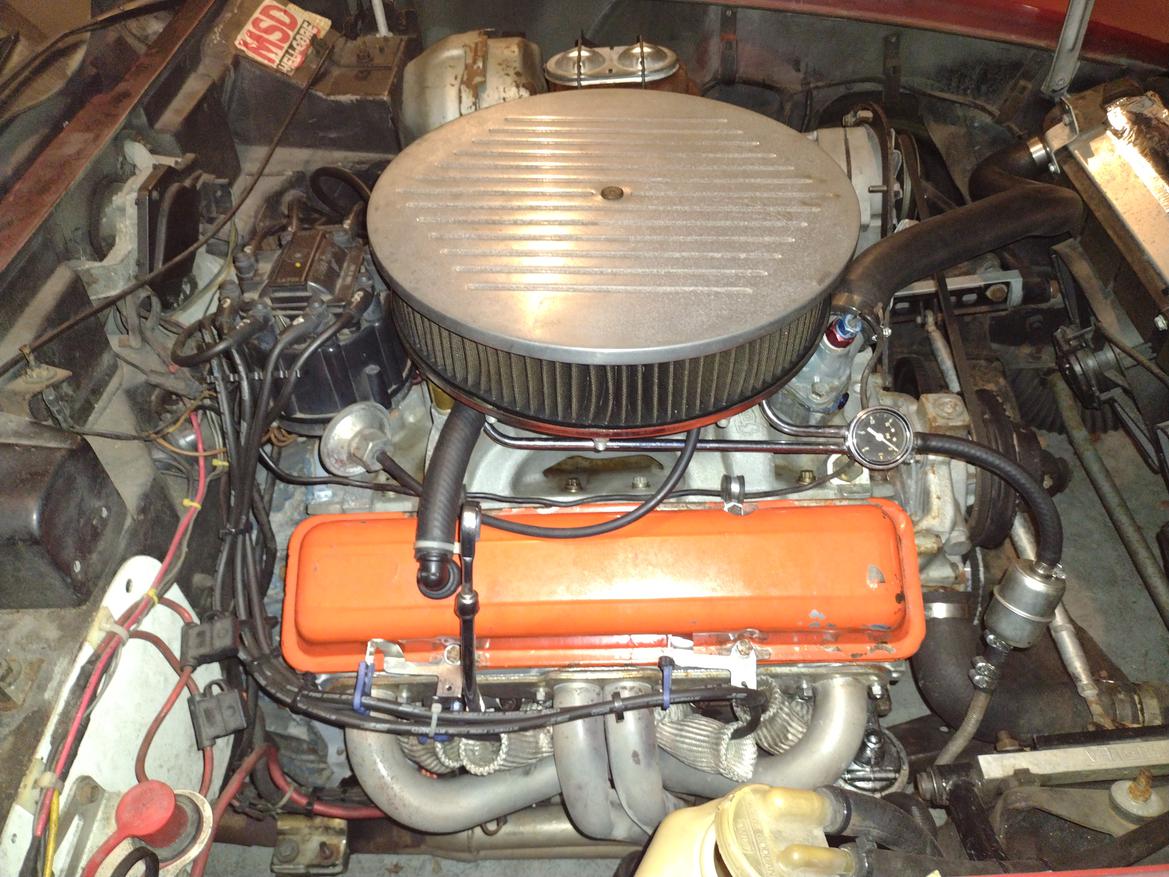Yup. Holley 4150. Nothing wrong with that. Good carbs.
Extreme generalizations: Holley is the HP king. You'll make 3.36 more hp at redline (which you'll never feel) and it does pretty good at taking stabs at AFR everywhere else. They are more about bulk flow at peak velocity and RPM but don't emphasize drivability and mixture anywhere else. They can be tuned to be VERY driveable, but the squarebore (meaning equally sized round venturis for each barrel) aren't really inspiring. Most of the aftermarket for Holley-based carbs like Quick Fuel have modified metering blocks that either tend to squeak out a few more hp or try to maximize street manners and they do a good job, but they have limitations.
Edelbrock/Carter is the simplicity king. They are the beginner carb, like the Mattel workbench and tool kit you got as a 3-year-old. They atomize fuel well and that's about it, but aside from having three circuits (idle, primary, secondary) they are unsophisticated chunks of cast aluminum with holes in the right place.
Qjet is a ground-up, purpose built carb that was engineered to be drivable. No other carburetor on the planet - factory or aftermarket - has more accurate metering. They have tiny primaries for throttle response, torque, and massive secondaries for supplying big flow. (spreadbore instead of squarebore) All Qjets are either 750 or 800 CFM, but the secondary air doors make it truly a flow-sensing carburetor. The same carb was used equally well on everything as small as a 3.8L Buick and a 4.3L V6 all the way up to a Caddy 500, and they all met EPA standards as late as 1989 when the last one was put on an Olds 307 in a Cadillac Fleetwood. (A car which I almost bought, by the way... strange thing that I drove the last car built with a Qjet)
The one achilles heel of the Qjet is that its accuracy comes from how it deals with the vacuum signal. If you have a really hairy cam and massive head flow, it can start getting confused, but if you have that kind of engine, you don't care about part throttle cruise anyway. Once you drop below 10-ish inches of idle vacuum, you're getting outside of streetable anyway, and a Holley might be a wiser choice since you're likely running a 4000-stall converter and the only street time it sees is maybe on the way to the drag strip.
EFI definitely has its benefits, but in all honesty it likely won't be better at the MPG game than a Qjet, probably won't make any more power or torque than a Qjet, the question is if you want the little advantages of EFI with a big cash input, or if you want to keep more money in your pocket and tap the accelerator before you start it on a cold day.
Other big benefit of a carb is its simplicity. Chances are you can run it for 30 years without touching it, but MAP sensors, injectors, coolant temp sensors, IACs, IATs, TPS, ECMs, O2 sensors, and all the other fun stuff associated with EFI can be an additional failure point.
My vote is to keep the carb. Tune up the Holley and see how you like it. If you want a bit more refinement, throttle response, torque, and are willing to give up $300-400 and 2 hp, have someone build you a proper Qjet.
Edit to add.... if you pull the Holley off and see that it has a spreadbore intake, great. If it has a squarebore intake, you can't just adapt a spreadbore carb to it. Spreadbore intake can take either flavor of carb without a hiccup. Squarebore intake can only take a squarebore carb.











































